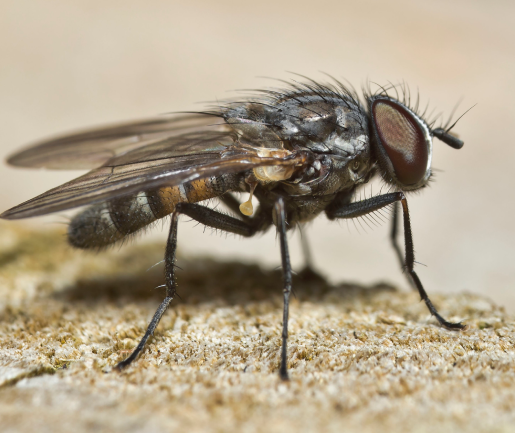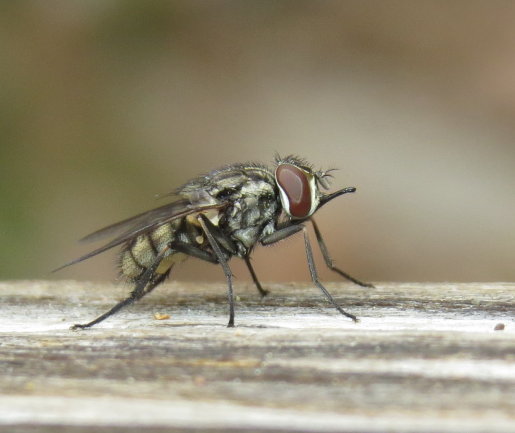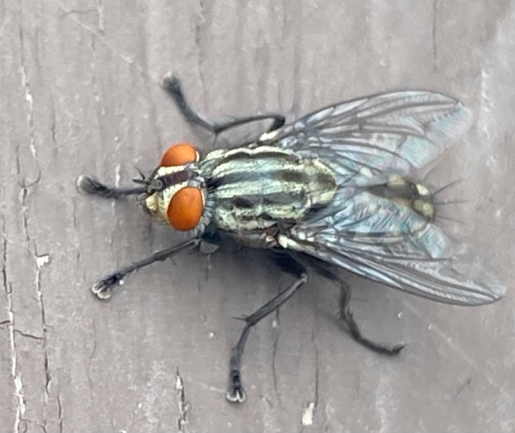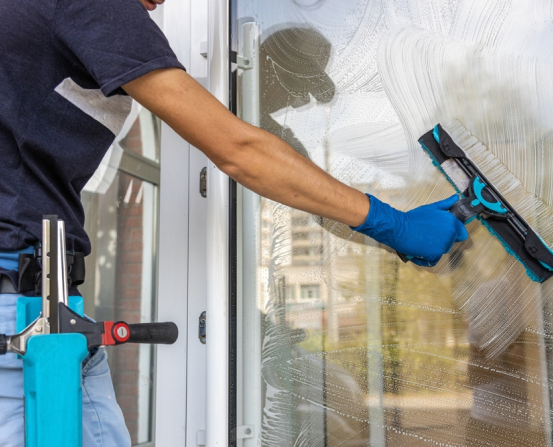Act Now - Limited Time Offer
$67 Pest Control

Jonathan Mitchell
Pest Control Technician
Ty Archer
Pest Control Technician
Mackenzie Keene
Office Manager
Blow flies, larger than the common house fly, are easily recognized by their shiny metallic colors, such as black, green, or blue. They are noisy and lay their eggs on decaying meat. Depending on the species, larvae can develop into adult flies within 7 to 15 days. These flies are often found around garbage, pet waste, and spoiled food, making them a concern for homes and businesses.
Since 1989, the Oriental latrine fly, a blow fly species, has been a nuisance in Southern California. They are frequently seen around dumpsters and shaded areas during summer months. If larvae are located near homes, they may migrate indoors, creating a disturbance when they mature. Regular cleaning and proper waste disposal are effective methods to prevent blow fly infestations.


The little house fly (Fannia canicularis) is recognized for its distinct flight, hovering in mid-air without frequently landing on food. This makes them less likely to contaminate food compared to other house flies.
Their eggs are laid in decayed plant material, compost, or animal excrement, especially from pets like poultry or rabbits. With a life cycle of about 24 days, they go from egg to adult. Though they can be bothersome, their attraction to decaying materials limits their indoor threat.
Muscina stabulans, or the false stable fly, is slightly bigger and sturdier than the typical house fly, with a dark gray color. Unlike the true stable fly, it doesn’t bite but can still invade homes to lay eggs on mildly spoiled food.
The maggots often thrive in decaying plant matter and animal waste. The fly’s life cycle lasts around 14 days. While not a biter, its presence can be annoying, especially indoors when eggs are laid. Understanding its habits can help with controlling the problem effectively.


Black garbage flies are small, glossy black flies, about 1/5″” long. These slender pests are most prevalent in garbage waste, especially in rural regions where trash collection is infrequent. Though they aren’t commonly found around urban homes, they thrive in areas with poor waste disposal practices.
Their life cycle lasts about ten days, allowing them to develop quickly. Good waste management helps reduce their numbers.
Though stable flies look like house flies, they have a pointed, slender beak for biting. These flies feed on livestock like cattle and horses but will bite humans, especially during rainy weather when they come indoors.
Stable flies are not just a nuisance; they can affect pets and livestock. They breed in damp environments where decaying organic matter, manure, and urine-soaked straw are present. Regular cleanup of waste can significantly reduce their population.


Flesh flies (Sarcophaga species) are larger than the average house fly and can be identified by the checkerboard pattern on their abdomen. They are typically gray with black stripes across the thorax. Instead of laying eggs, flesh flies give birth to live maggots. These maggots are often found in decomposing meat, dead animals, and excrement like dog droppings. Flesh flies are usually seen near dead snails or carcasses.
These flies can complete their life cycle in as little as eight days. They thrive around decaying organic matter. Spotting slow-moving flies with checkered abdomens could indicate a flesh fly issue.
At Sheldon Pest Control, we start by conducting a thorough inspection of your property to pinpoint breeding sites for flies. This includes examining drains, garbage areas, and places with stagnant water or decaying matter. We look for different species like drain flies, blow flies, and others.
We also inspect plumbing systems to eliminate leaks and blockages that can attract flies. With specialized tools, we detect fly larvae and adults in hard-to-reach spots. This allows us to recommend the most effective fly control treatments tailored to your situation.


Please clean your indoor and outdoor spaces thoroughly before our technician arrives. This step helps us quickly locate the source of the infestation. Our technicians will conduct a full inspection to assess the severity of the fly problem and identify any underlying plumbing issues.
For drain flies, we use targeted products to kill both larvae and adult flies within the drains. We also spray around food preparation areas but avoid direct application on those surfaces. Traps are placed in optimal spots where flies tend to gather.
Sheldon Pest Control delivers a monthly fly control service that addresses problem areas like drains and waste zones. Our team treats these spots to prevent flies from breeding and spreading.
We use eco-friendly products effective against drain flies, blow flies, and stable flies, providing continuous protection. Monthly treatments ensure that your space remains free from flies, giving you peace of mind year-round.


Limited time offer! Get $50 off your first pest control service.

Barrier Services
Sheldon Office
© Sheldon Pest Control 2024